If you are looking to buy your first camera lens, you may be wondering what the difference is between a 28-mm and 35-mm lens. Both of these lenses have their pros and cons, but which one is the best for you? This article will discuss the main differences between these two lenses so that you can make an informed decision about which one is right for you.
What Is a Camera Lens?
A camera lens is a piece of optical glass that helps to focus light onto the film or image sensor inside the camera. Lenses come in a wide variety of shapes and sizes, and each one is designed for a specific purpose. Some of them are produced to work with specific types of cameras, while others are made to be used with a variety of different camera models.
There are two main types of camera lenses: prime lenses and zoom lenses. Prime lenses are fixed focal length lenses, which means that they can’t zoom in or out. Zoom lenses, on the other hand, have variable focal lengths, which allows them to be used for both close-up and wide-angle shots.
One of the most important things to consider when choosing a lens is the size of the sensor inside your camera. This will determine the field of view that you’ll get with each lens. For example, if you have a full-frame DSLR camera, then a 50mm lens will give you an.
Some lenses are meant for close-up photography, while others are better suited for landscape shots. There are even lenses that can be used for both purposes.
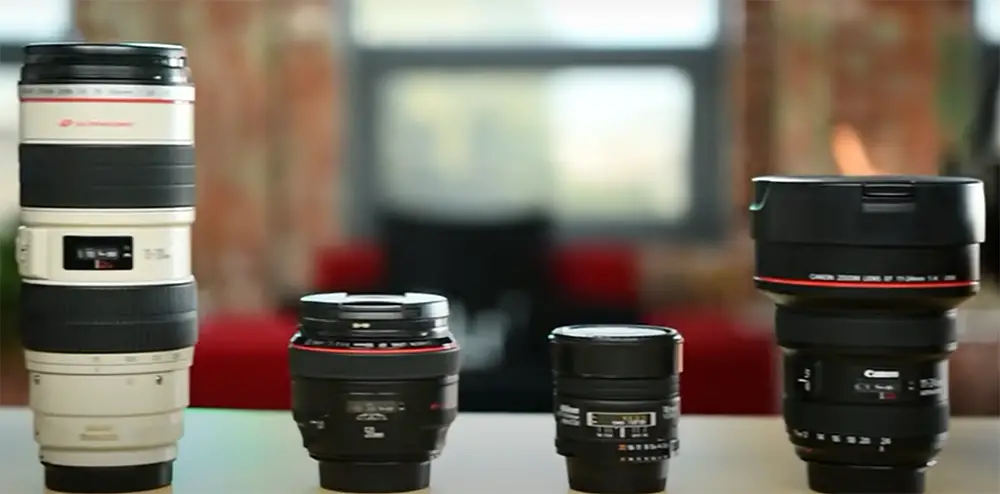
The two most common types of camera lenses are 28-mm and 35-mm. Both of these lenses have their own unique set of characteristics that make them ideal for certain situations [1].
6 Basic Types of Camera Lenses
Macro Lenses
Macro lenses are designed for close-up photography. This means that they have a very short focal length, which allows them to capture images that are much closer to the subject than other types of lenses. This makes them ideal for taking pictures of small objects or for taking close-up shots of people’s faces.
If you want to choose the macro lenses, you need to consider the working distance. It is the distance between the front of the lens and the subject. The shorter the focal length, the shorter the working distance.
The advantages of the macro lenses are that they can capture a lot of detail and they are great for taking close-up shots. The disadvantages are that they have a very short focal length, which can make it difficult to keep the subject in focus, and they have a very short working distance, which can make it difficult to take pictures of moving subjects [2].
Telephoto Lenses
Telephoto lenses are designed for taking pictures of distant subjects. They have a very long focal length, which allows them to capture images that are much farther away from the subject than other types of lenses. This makes them ideal for taking pictures of animals or for taking pictures of people from a distance.
If you want to choose the telephoto lenses, you need to consider the maximum aperture. It is the largest opening in the lens through which light can pass. The larger the maximum aperture, the more light that can pass through the lens and into the camera. The disadvantages of telephoto lenses are that they are very expensive and they are very heavy.

The advantages of telephoto lenses are that they can capture images that are far away from the subject and they can capture a lot of detail. The disadvantages are that they are very expensive and they are very heavy.
Wide Angle Lenses
Wide-angle lenses are designed for taking pictures of large subjects. They have a very short focal length, which allows them to capture images that are much closer to the subject than other types of lenses. This makes them ideal for taking pictures of landscapes or for taking group shots.
By choosing the wide-angle lenses, consider the field of view. It is the angle at which the lens can capture an image. The wider the field of view, the more of the scene that can be captured in the image. The disadvantages of wide-angle lenses are that they can distort the image and they have a very short focal length, which can make it difficult to keep the subject in focus.
Standard/normal Lenses
Standard or normal lenses are designed for taking pictures of subjects that are a moderate distance away. They have a focal length that is somewhere between the focal length of wide-angle lenses and telephoto lenses. This makes them ideal for taking pictures of people or for taking pictures of landscapes.
The main advantage of standard/normal lenses is that they can be used for a variety of different types of photography. The disadvantages are that they can distort the image and they have a limited field of view.
Specialty Lenses
Specialty lenses are designed for taking pictures of specific subjects. They have a focal length that is specifically designed for the type of photography that you want to do. For example, there are fisheye lenses, which are designed for taking pictures of objects that are very close to the lens, and there are tilt-shift lenses, which are designed for taking pictures of buildings.
The main advantage of specialty lenses is that they can be used for a specific type of photography like landscapes, portraits, close-ups, or action shots. The disadvantages are that they can be very expensive and they have a limited field of view.
Zoom Lenses
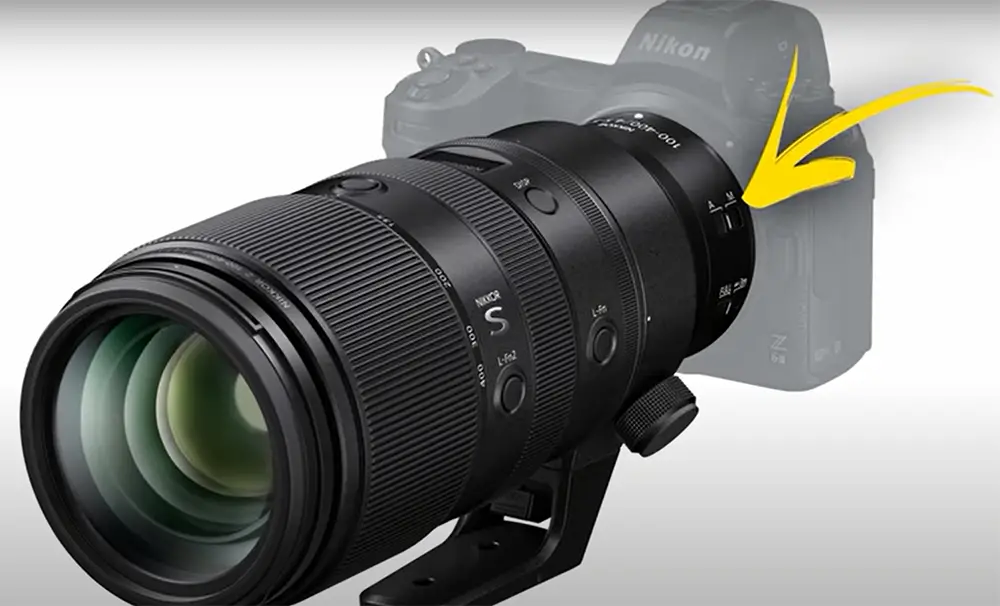
The main advantage of zoom lenses is that they can be used for a variety of different types of photography. Among them are portraits, close-ups, and action shots. The disadvantages are that they can distort the image and they have a limited field of view.
Different sizes of Camera Lenses
The size of the lens is what determines how much of the scene in front of you will be captured in your photo. There are standard sizes for lenses, which are usually described in millimeters (mm). Lenses with a smaller mm number will capture a wider view than lenses with a larger mm number. For example, a 20 mm lens will capture more of the scene than a 50 mm lens.
The most common sizes for camera lenses are 28 mm, 35 mm, and 50 mm. There are also other less common sizes like 85 mm and 100 mm. Each size has its own unique properties that can make it better or worse for certain types of photography.
If you choose the smallest lenses, you can achieve very wide-angle shots. But if you choose one of the larger lenses, your photos will have a more “zoomed in” look. For example, if you want to take a photo of a person from far away, you would need a longer lens like 85 mm or 100 mm. But if you want to take a photo of a landscape, you would need a shorter lens like 28 mm or 35 mm [3].
Different Types of Photography
There are many different types of photography, and each one might benefit from a different lens size. For example, landscape photographers often prefer to use a wider lens so they can capture more of the scene in front of them. Portrait photographers might prefer to use a 35-mm or 50-mm lens so they can get a more flattering photo of their subject.
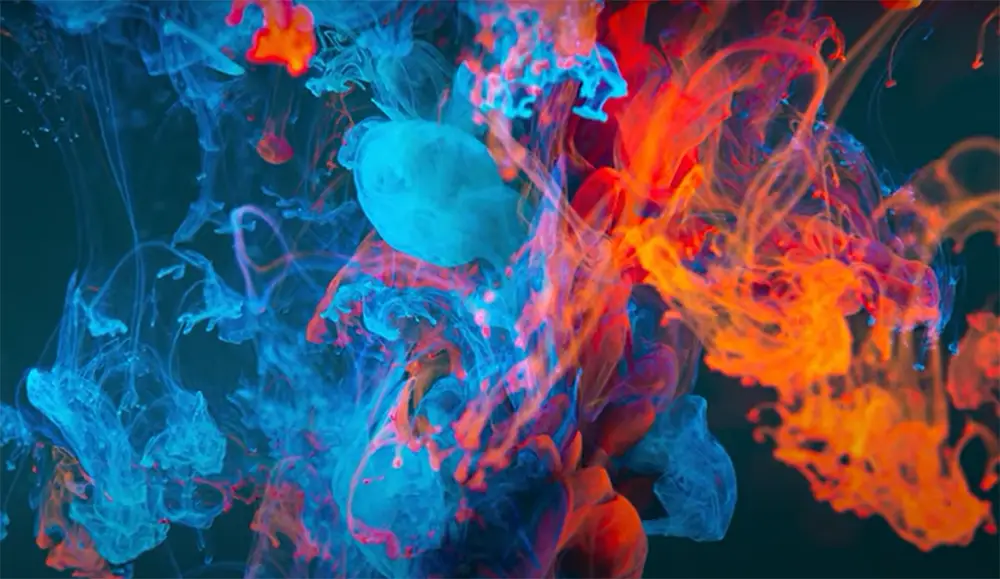
It’s not just the size of the lens that matters, but also the type of camera you are using. Different cameras have different sensor sizes, which means that they will capture different amounts of the scene in front of them. For example, a full-frame camera will capture more than an APS-C sensor camera.
When deciding which lens size to choose, you should first decide what type of photography you want to do and then find a lens that is compatible with your camera.
Main Characteristics of the 28-mm and 35-mm Lens
When it comes to lenses, there are a few key characteristics that can help you decide which one is right for you. Here are some of the main differences between 28-mm and 35-mm lenses:
- Aperture: The aperture is the opening in the lens through which light passes. The size of the aperture affects how much light is let in and also influences the depth of field. A larger aperture (smaller f-number) results in a shallow depth of field, while a smaller aperture (larger f-number) gives you a greater depth of field.
- Field of view: The field of view is determined by the focal length of the lens and it describes how much of a scene will be captured. A 28-mm lens has a wider field of view than a 35-mm lens, meaning that it can capture more of the scene in front of you.
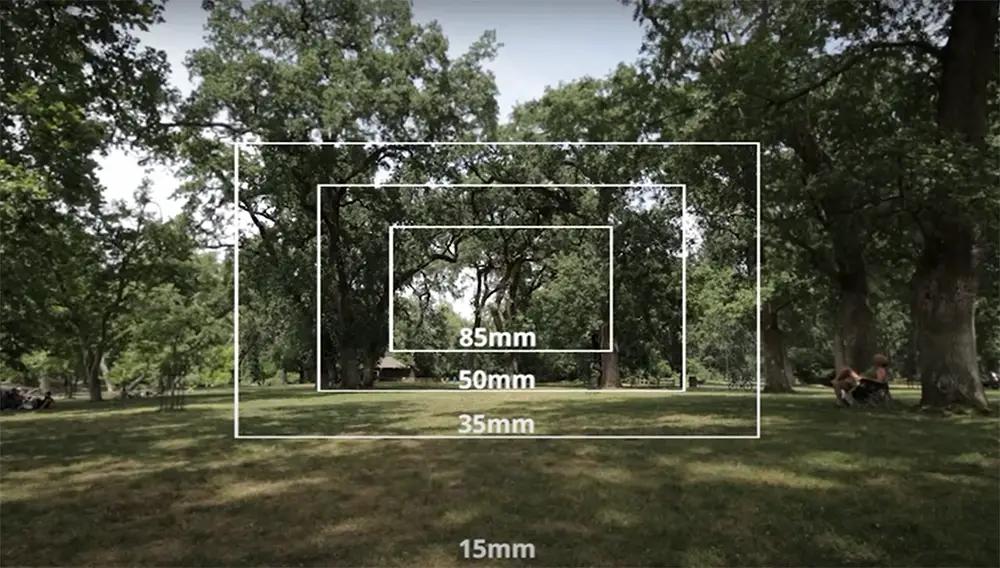
- Weight and size: Lenses with a shorter focal length tend to be smaller and lighter than those with a longer focal length. This makes 28-mm lenses more portable than 35-mm lenses, which can be beneficial if you’re traveling or hiking [4].
A Lens’s Focal Length Determines Its Characteristics
The focal length of a lens is the distance between the lens and the sensor when the subject is in focus. This distance determines the field of view and magnification of the image. A shorter focal length will result in a wider field of view, while a longer focal length will give you a narrower field of view but more magnification.
28-mm lenses are typically used for landscape photography, as they allow you to capture a wide area in your frame. They’re also good for street photography, as they enable you to get close to your subjects without invading their personal space. 35-mm lenses are often used for portraits, as they provide a natural perspective that flatters your subjects. They can also be used for event photography, as they give you the ability to capture both wide shots and close-ups.
Depth of Field On A Lens
The depth of field is the portion of a scene that appears in focus. It’s determined by the aperture, focal length, and distance to your subject. A wider aperture (smaller f-number) results in a shallow depth of field, while a smaller aperture (larger f-number) gives you a greater depth of field.
For example, if you’re using a 28-mm lens with an aperture of f/16 and you focus on a subject that’s 1,5 meters away, anything from 1,2 meters to 1,8 meters will appear in focus. If you use the same lens but change the aperture to f/11 then objects from 0,9 meters to 2,1 meters will be in focus.
The 35-mm lenses have a shallower depth of field than the 28-mm lenses. This can be beneficial if you want to isolate your subject from the background and make them stand out. It can also be helpful when shooting in low light, as a wider aperture allows more light to reach the sensor.
The 35 mm lens has a narrower field of view than the 28 mm lens because it captures less scene. This is due to its longer focal length which gives it more magnification power. With this you can see that the 35 mm lens is better for portraits while the 28 mm is better landscapes or street photography where.
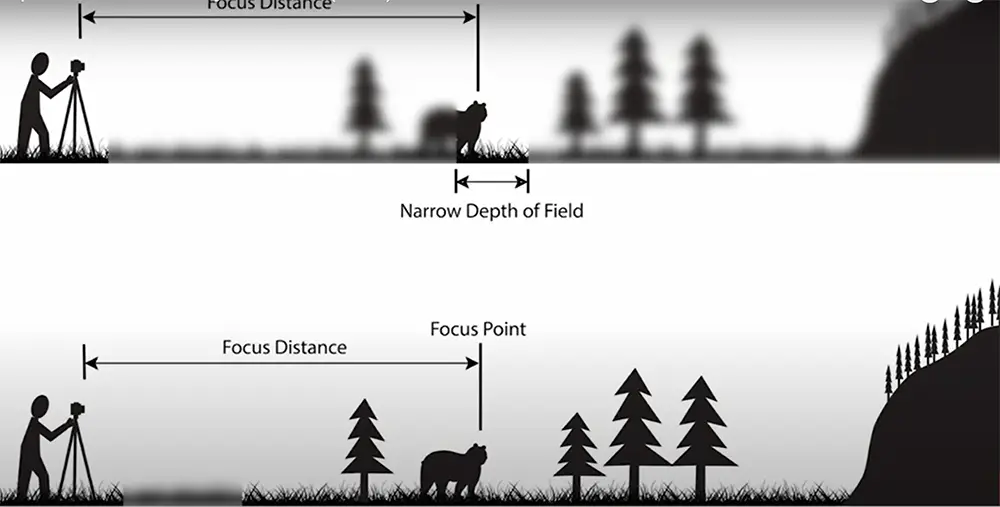
As you can see, the depth of field is affected by both the focal length and the aperture. A wider aperture results in a shallow depth of field, while a longer focal length also gives you a shallow depth of field. If you want to maximize your depth of field, use a smaller aperture (larger f-number) and focus on subjects that are further away.
Pros and cons of the 28-mm lens
28-mm lenses are typically light and compact, making them a good choice for travel photography. They also have a wide field of view, which can be helpful for capturing landscape photos. However, 28-mm lenses can sometimes produce distorted images, particularly at the edges of the frame.
If you want to use the 28-mm lenses correctly and effectively, here are some tips:
- Get close to your subject. This will help you fill the frame and avoid distortion.
- Use a tripod. This will help you keep the camera steady and avoid blurry images.
- Choose a low ISO setting. This will help you avoid noise in your photos.
Moreover, 28-mm lenses are not the best choice for close-up photography or portraiture. For these types of photos, you’ll want to use a lens with a longer focal length.
Pros and cons of the 35-mm lens

The use of the 35-mm lenses was traditionally limited to photojournalists and professionals; however, with the rising popularity of DSLRs, many amateurs and enthusiasts have started using 35-mm lenses as well. Here are some of the main advantages and disadvantages of the 35-mm lens:
Advantages:
- The field of view is wider than that of a 50-mm lens, making it ideal for capturing landscapes and group shots.
- They are also relatively lightweight and compact, making them easy to carry around.
- In addition, 35-mm lenses typically have a fast aperture (f/0.95 – f/16), which allows more light to enter the camera sensor, resulting in sharper images.
Disadvantages:
- The depth of field is shallower than that of a 50-mm lens, making it more difficult to keep both the foreground and background in focus.
- They can also be more expensive than other lenses with similar focal lengths.
If you’re trying to decide between a 28-mm or 35-mm lens, it’s important to know the main differences between the two. 28-mm lenses are typically wider angle lenses, while 35-mm lenses are considered standard lenses. However, there are a few key differences that you should keep in mind when making your decision.
28-mm lenses:
- Wider field of view
- Greater depth of field
- More expensive
35-mm lenses:
- Narrower field of view
- Shallow depth of field
- Lightweight and compact
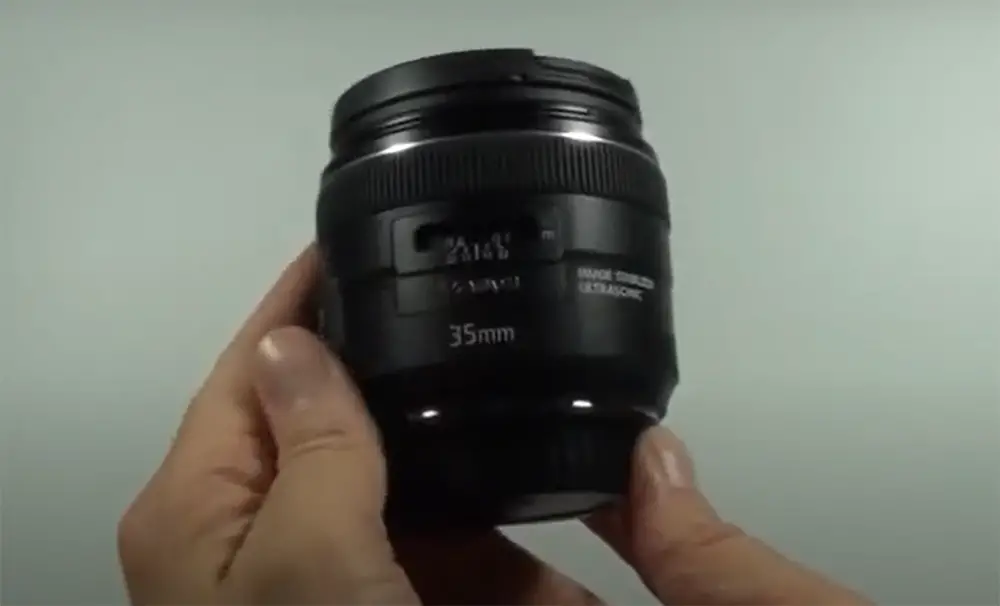
Ultimately, the decision between a 28-mm or 35-mm lens comes down to what you plan on using it for. If you’re looking to capture wide shots, then a 28-mm lens would be the better choice. However, if you’re looking for a standard lens that is easy to carry around, then a 35-mm lens would be the better option. Whichever lens you choose, make sure you test it out before making your final decision.
Lenses for travel photography
The main difference between 28-mm and 35-mm lenses is their field of view. A 28-mm lens has a much wider field of view than a 35-mm lens, making it ideal for landscape photography. However, this also means that objects will appear smaller in the frame, so it’s not ideal for close-up shots.
If you want to take travel photos that capture the whole scene, go for a 28-mm lens. Such photos with 35-mm lenses will have to be cropped, which can result in a loss of quality.
Lenses for astrophotography
When it comes to astrophotography, both lenses have their own advantages and disadvantages. It really depends on what you want to capture in your photos. If you want to photograph a large area of the night sky, then a 28-mm lens would be the better choice. However, if you want to focus on a specific object or area of the sky, then a 35-mm lens would be the better option.
Lenses for close-ups and nature photography
There are two main types of lenses that photographers use: the 28-mm lens and the 35-mm lens. Each has its own strengths and weaknesses, so it’s important to know which one is right for your needs.
The 28mm lens can be used for close-ups and nature photography. It’s a great choice for photographers who want to get close to their subject matter. The downside of this lens is that it can be difficult to keep the entire frame in focus.
The 35mm lens is ideal for landscape and street photography. It’s a great choice for photographers who want to capture a wide area in a single shot. The downside of this lens is that it can be difficult to get close to your subject matter.
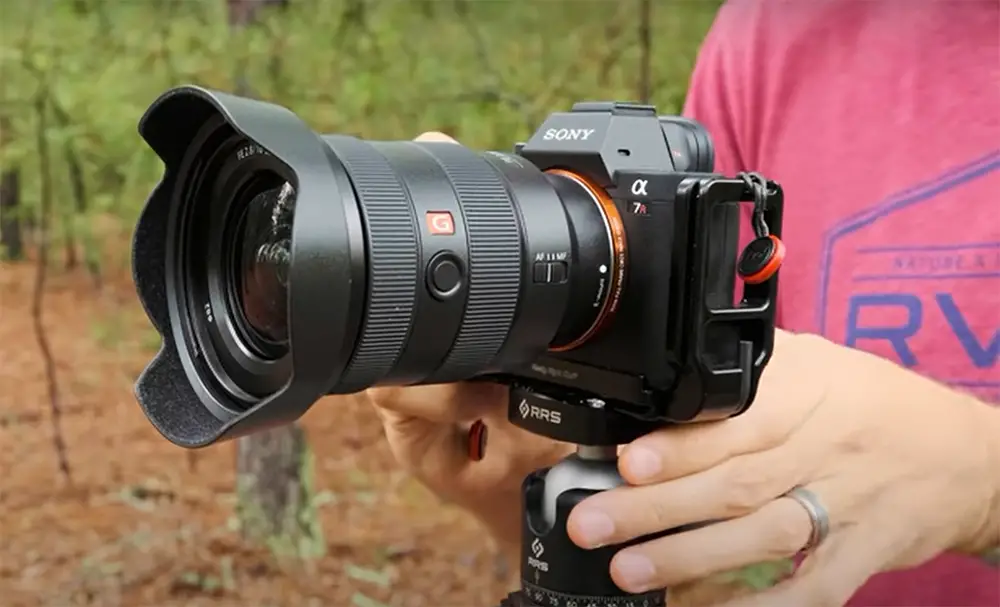
Lenses for filmmaking and vlogging
The 28-mm lens and the 35-mm lenses can be both used for filmmaking and vlogging. If you want to tinker with your video quality and don’t mind a little bit of distortion, then the 28-mm lens might be a better option for you. It offers a shallower depth of field than the 35-mm lens, which can give your footage a more cinematic look.
On the other hand, if you want your videos to be as sharp and clear as possible, then the 35-mm lens is probably a better choice. It doesn’t distort your footage as much as the 28-mm lens and offers a deeper depth of field, which can be helpful if you’re filming in low-light conditions.
Comparison of 28mm vs. 35mm Lens: Main Differences
When it comes to choosing a lens for photography, the focal length is one of the most important factors to consider. Two popular focal lengths for wide-angle lenses are 28mm and 35mm. In this table, we will compare the main differences between these two types of lenses.
| Indicator | 28mm Lens | 35mm Lens |
|---|---|---|
| Focal Length | 28mm | 35mm |
| Angle of View | 75.4° | 62.2° |
| Depth of Field | Shallow | Deeper |
| Low Light Performance | Good | Better |
| Image Quality | Sharp | Sharper |
| Weight | Lighter | Heavier |
This table highlights some of the key differences between 28mm and 35mm lenses. While both lenses are good choices for wide-angle photography, there are some important distinctions to consider. For example, the 28mm lens has a wider angle of view, but the 35mm lens may produce sharper images and better low-light performance. The choice ultimately depends on your personal preference and the type of photography you will be doing.
FAQ
What’s the difference between 28-mm and 35-mm film?
The main difference between 28-mm and 35-mm film is that 28-mm film has a smaller image area than 35-mm film. This means that you’ll get less detail when you print or scan your photos. However, 28-mm film is cheaper to develop and process, so it’s a good choice if you’re on a budget.
What is a 28-mm lens best for?
A 28-mm lens is a good choice for general-purpose photography, such as landscapes, street scenes, and group shots. It’s also a good choice for video because it provides a wide field of view.
If you’re shooting with a DSLR or mirrorless camera, then you’ll need to choose between a 28-mm lens and a 35-mm lens. Both have their pros and cons, so it’s important to know what you’re looking for before making your decision.
What are 35-mm lenses good for?
35-mm lenses are good for a variety of photography, including portraits, close-ups, and low-light situations. They’re also a good choice for video because they provide a more narrow field of view than 28-mm lenses. You might also be interested in 35mm vs 50mm vs 85mm lenses comparison.
With so many different types of lenses on the market, it can be hard to know which one to choose. If you’re unsure about which lens to get, then it’s a good idea to rent or borrow a lens before buying it. This way, you can try out the lens and see if it’s a good fit for your needs.
Is a 28-mm lens good for portraits?
A 28-mm lens can be used for portraits, but it’s not the ideal choice. For portraits, you’ll want a lens that provides a more narrow field of view. This will help to isolate your subject and minimize distractions in the background.
If you’re set on using a 28-mm lens for portraits, then you’ll need to be aware of the distortion that can occur. When shooting with a wide-angle lens, you’ll need to be careful not to distort your subject’s features. This can be corrected in post-processing, but it’s something to keep in mind.
Should I buy 28-mm or 35-mm?
The decision of whether to buy a 28-mm or 35-mm lens depends on your needs. If you’re looking for a general-purpose lens, then the 28-mm is a good choice. If you need a more specialized lens, such as for portraits or low-light situations, then the 35-mm might be a better option.
It’s also important to consider your budget when making your decision. 28-mm lenses are typically cheaper than 35-mm lenses, so if you’re on a tight budget, then the 28-mm might be the better choice.
Can I use 35mm film on a 28mm lens?
Yes, you can use 35-mm film on a 28-mm lens. However, keep in mind that the image area will be smaller than with a 35-mm lens. This means that you’ll get less detail when you print or scan your photos.
If you’re using a DSLR or mirrorless camera, then you’ll need to choose between a 28-mm lens and a 35-mm lens. Both have their pros and cons, so it’s important to know what you’re looking for before making your decision.
What mm lens is best for portraits?
For portraits, you’ll want a lens that provides a more narrow field of view. This will help to isolate your subject and minimize distractions in the background.
A 35-mm lens is a good choice for portraits, but you can also use lenses with longer or shorter focal lengths. It’s important to experiment with different lenses to see what works best for you.
Is 35-mm THE BEST?
There is no one “best” lens, as the best lens for you will depend on your needs. If you’re looking for a general-purpose lens, then the 28-mm is a good choice. If you need a more specialized lens, such as for portraits or low-light situations, then the 35-mm might be a better option.
Rent or borrow a lens before buying it. This way, you can try out the lens and see if it’s a good fit for your needs.
Can you zoom with a 35mm lens?
Yes, you can zoom with a 35-mm lens. This is done by changing the focal length of the lens. The longer the focal length, the more zoomed in your image will be.
Keep in mind that zooming with a 35-mm lens will cause some distortion, so it’s best to use this technique sparingly. If you need to zoom in, then it’s better to do so in post-processing.
What is the best lens for everyday photography?
For everyday photography, you’ll want a lens that is versatile and can be used in a variety of situations. A 28-mm lens is a good choice for general-purpose photography because it provides a wide field of view.
If you’re looking for a more specialized lens, then the 35-mm might be a better option. This lens is good for low-light situations and portraits. It’s also important to consider your budget when making your decision. 28-mm lenses are typically cheaper than 35-mm lenses, so if you’re on a tight budget, then the 28-mm might be the better choice.
What three lenses should every photographer have?
Every photographer should have a 28-mm lens, a 35-mm lens, and a 50-mm lens. These three lenses will cover most of your photography needs.
The 28-mm lens is good for general-purpose photography and provides a wide field of view. The 35-mm lens is good for low-light situations and portraits. The 50-mm lens is good for close-up shots and provides a more narrow field of view.
These three lenses will cover most of your photography needs, but it’s important to experiment with different lenses to see what works best for you.
How many lenses do I need for photography?
You’ll need at least one lens for photography, but it’s important to have a few different lenses so you can be prepared for different situations. As usual, it depends on your needs.
The professionals have an array of lenses at their disposal, but the average amateur photographer will do just fine with a couple of good quality lenses. A 50-mm lens and a 35-mm lens should cover most of your needs, but it’s important to experiment with different focal lengths to see what works best for you.
Zoom lenses are also a good option because they offer a lot of flexibility in a single lens. These lenses can be expensive, but they’re worth the investment if you do a lot of different types of photography.
Check more posts to improve your photography skills:
- Rokinon vs. Samyang Lenses
- How to Tell if a Camera Sensor is Damaged?
- Using Directional Lighting Guide
As a general rule, it’s better to have too many lenses than not enough. You can always sell or trade your unused lenses, but it’s difficult to replace a lens once you’ve sold it.
Useful Video: 28mm vs 35mm for Street Photography
Conclusion Paragraph
If you are a beginner in photography, or you are simply unsure of what focal length to use, then a 35-mm lens is probably the best place to start. On the other hand, if you have a specific project in mind that requires a certain field of view, then a 28-mm lens might be better suited for your needs. In general, 35-mm lenses are more versatile and can be used for a variety of different purposes, while 28-mm lenses are better suited for specific projects.
References:
- https://www.masterclass.com/articles/basic-photography-101-understanding-camera-lenses
- https://photographycourse.net/types-of-camera-lenses/
- https://www.photoguard.co.uk/camera-lens-guide
- https://thephotographyprofessor.com/28mm-vs-35mm-lens-choosing-the-right-one-for-you/






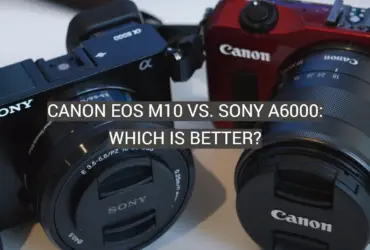
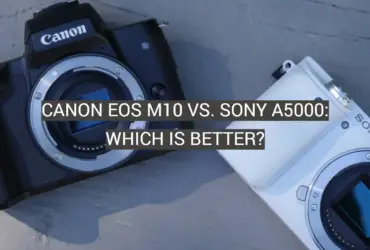
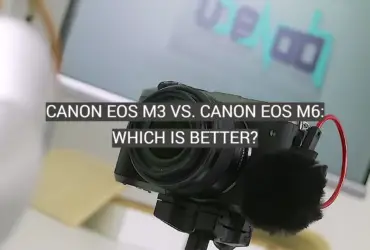
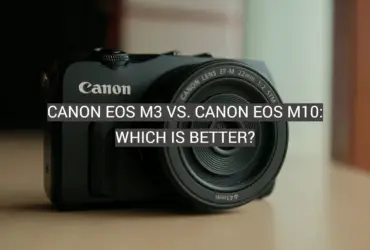
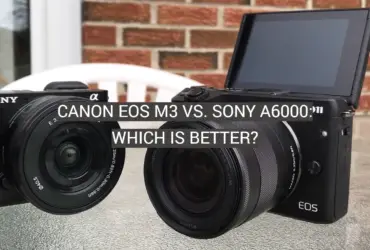
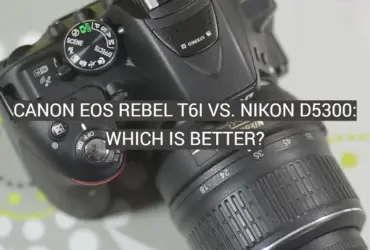
I have used both a 28mm and 35mm lens for travel, and I prefer the 35mm. The 28mm is a bit too wide for my taste, and it can be difficult to get everything in the shot. The 35mm gives me a bit more flexibility to compose my shots, and it feels more natural to me. That said, it really depends on what you are looking for in a lens. If you want a wider angle of view, the 28mm may be a better option for you.
I have shot extensively with both a 28mm and 35mm lens and I have to say that I prefer the 35mm. The 28mm feels a bit too wide for my taste and often results in distorted images. The 35mm gives me a bit more flexibility to frame my shots the way I want them and doesn’t distort the images as much. That being said, it really depends on what you’re shooting and what you’re comfortable with. If you’re shooting landscapes or architecture, the 28mm may be a better option since it will capture more of the scene. If you’re shooting portraits or other types of shots where you want to frame your subject closely, the 35mm would be a better option. Ultimately, it’s up to you to decide which lens is right for you.
I remember the first time I ever used a 28mm lens for street photography. I was amazed at how wide the field of view was, and how much more of the scene I could fit into the frame. This made it a lot easier to take photos of strangers on the street, as I could get closer to them without them feeling too uncomfortable. The 28mm lens has since become my go-to lens for street photography, and I’ve enjoyed capturing candid shots of people going about their day.
I started shooting film with a 35mm camera, but eventually switched to a 28mm. I prefer the 28mm because it feels more like I’m just capturing what’s in front of me, rather than trying to frame everything perfectly. With the 35mm, it felt like I was always trying to make sure everything was in the shot, and that took away from the spontaneity of photography for me.
I remember the first time I ever shot with a 28mm lens. It was a revelation! The images were so much wider than anything I had ever shot before, and they gave me a totally new perspective on the world.
Since then, I’ve fallen in love with the 28mm focal length. It’s perfect for capturing everything from landscapes to street scenes to architecture. Plus, it gives you a really immersive view of the world that 35mm lenses can’t match.
If you’re looking for a lens that will give you a truly unique viewpoint, then I recommend trying out a 28mm lens. You won’t be disappointed!
I’ve used both a 28mm and 35mm lens for travel and while there are some differences, I think they both have their benefits. I typically like to take photos of landscapes and cityscapes, so for me, the 35mm lens provides a bit more detail in the shots. However, when it comes to capturing portraits or close-ups, the 28mm lens is great for getting more of the scene into the frame. In the end, it really depends on what you’re looking to capture and what you feel most comfortable using.
I have never tried using 35mm film in a 28mm camera, so I cannot say definitively whether it would work or not. However, I imagine that there would be some noticeable differences in terms of image quality and framing. With a 35mm lens, you would likely get a wider field of view and slightly more zoom, which might be advantageous in certain situations. However, the smaller sensor size of a 28mm camera might not be able to fully take advantage of the extra resolution that 35mm film provides. Ultimately, it would be up to you to decide whether the benefits of using a 35mm lens outweigh the drawbacks of using a 28mm camera.
I have shot with both a 35mm and a 28mm lens, and I prefer the 35mm. The 35mm gives you a wider field of view, which is great for landscapes and architecture. The 28mm is better for shooting portraits and close-ups, but I find that it’s not as versatile as the 35mm.
I remember the first time I ever used a 35mm lens. I had been photographing with a digital camera for a while and then decided it was time to start using a “real” camera. I went out and bought a SLR and a kit lens that was 18-55mm. I took it out for a test drive and hated it. The pictures were just too small. I decided that I needed to get a 35mm lens.
I did some research and found that there are two types of 35mm lenses: prime and zoom. I wasn’t sure which one to get, but after reading some reviews, I decided to go with the prime lens.
I couldn’t have been happier with my decision. The pictures turned out amazing! The depth of field was so much better than with my kit lens, and the colors were so much more vibrant.
If you’re thinking about upgrading your kit lens to a 35mm lens, I would highly recommend going with a prime lens. You won’t be disappointed!
I decided to use a 28mm lens on my camera for a day and see what the difference was. I found that I liked the look of the photos taken with the 28mm better. They seemed more intimate and showed more of the surroundings than the photos taken with the 35mm lens.
I primarily shoot with a 35mm lens, but have also rented and used a 28mm lens on a few occasions. I think the 35mm focal length is great for most situations because it allows you to get close to your subject while still having a wide field of view. However, I can see how the 28mm lens could be useful in certain situations where you need to get even more of the scene in frame. Overall, I prefer the 35mm focal length because it feels more versatile to me, but I would definitely recommend giving both options a try to see which one you prefer.
I have used both a 28mm and a 35mm lens, and I prefer the 35mm. The 28mm is just a bit too wide for my taste, and I find that the 35mm gives me a bit more flexibility in terms of what I can capture with my camera. Additionally, the 35mm lens seems to produce a bit sharper images than the 28mm.
I have always been a fan of 35mm lenses. I find that they are the perfect happy medium between wide-angle and telephoto lenses. They provide a great field of view without sacrificing image quality. I have used 35mm lenses for everything from landscape photography to portraits, and I have never been disappointed.
If you are looking for a versatile lens that can do it all, a 35mm lens is a great option. They are perfect for both beginner and experienced photographers alike. So if you are on the market for a new lens, I would highly recommend considering a 35mm model. You won’t be disappointed!
I have shot with 28mm, 35mm, and 50mm lenses and each has its own benefits and drawbacks.
The 28mm lens is great for landscapes and street photography. It gives you a wide field of view and makes it easy to capture the scene in its entirety. The downside is that it can be difficult to get close to your subject when shooting street photography.
The 35mm lens is perfect for portraits and everyday snapshots. It provides a good balance between width and magnification, making it easy to frame your shots. However, the 35mm lens isn’t as wide as the 28mm lens, so it’s not ideal for landscape photography.
The 50mm lens is great for shooting stationary objects or portraits from a distance. It provides a high level of magnification, which is perfect for capturing detail. However, the 50mm lens isn’t as wide or as long as the other two lenses, so it’s not ideal for all situations.
I have used both the Nikon 28mm and 35mm lenses and I personally prefer the 35mm. I find that it is a bit more versatile and gives me a bit more reach than the 28mm lens. That said, the 28mm lens is still a great lens and has its own advantages. If you are looking for a wider angle of view, then the 28mm lens is a good option.
I have personal experience with a 35mm lens and I can say that it is great for everyday use. I like to take my camera with me everywhere I go, and the 35mm lens is the perfect size for that. It’s not too bulky like some of the other lenses, and it still provides great image quality.
I have a 35mm lens and I love it, but I can see how a 28mm lens could come in handy. A 28mm lens is good for capturing wide landscapes and getting more into the scene than a 35mm lens. I found when I went to Italy that my 35mm lens was good for most things, but sometimes I wished I had a wider lens for some of the scenes I wanted to capture. If I were to go back, I would take my 28mm lens with me to get those shots.
I have shot a good amount of street photography with both a 28mm and 35mm lens. For me, I find that the 35mm focal length is better for street photography. With a 28mm lens, I feel like I am too far away from my subjects, and I can’t get as close as I would like. With a 35mm lens, I feel like I am in the right distance to get close to my subject, while also getting a good composition.
I have used both the Leica 28mm and Leica 35mm lenses and I have to say that there are some clear differences between the two. The Leica 28mm lens is definitely wider, which can be great for capturing landscapes or large groups of people. The Leica 35mm lens is a bit more versatile because it has a longer focal length, which can be helpful for portraits or close-up shots.
Overall, I prefer the Leica 35mm lens because it gives me more flexibility to capture a wider range of subjects. That said, the Leica 28mm lens can be a great option if you’re looking for a lens that is specifically designed for wide-angle shots.
I have shot with both a 35mm lens and a 28mm lens and I definitely prefer the field of view of the 35mm. With the 35mm lens, I feel like I have a more natural perspective and I can fit more into the frame. With the 28mm lens, I feel like I am too close to my subject and it can be difficult to get everything in the frame.